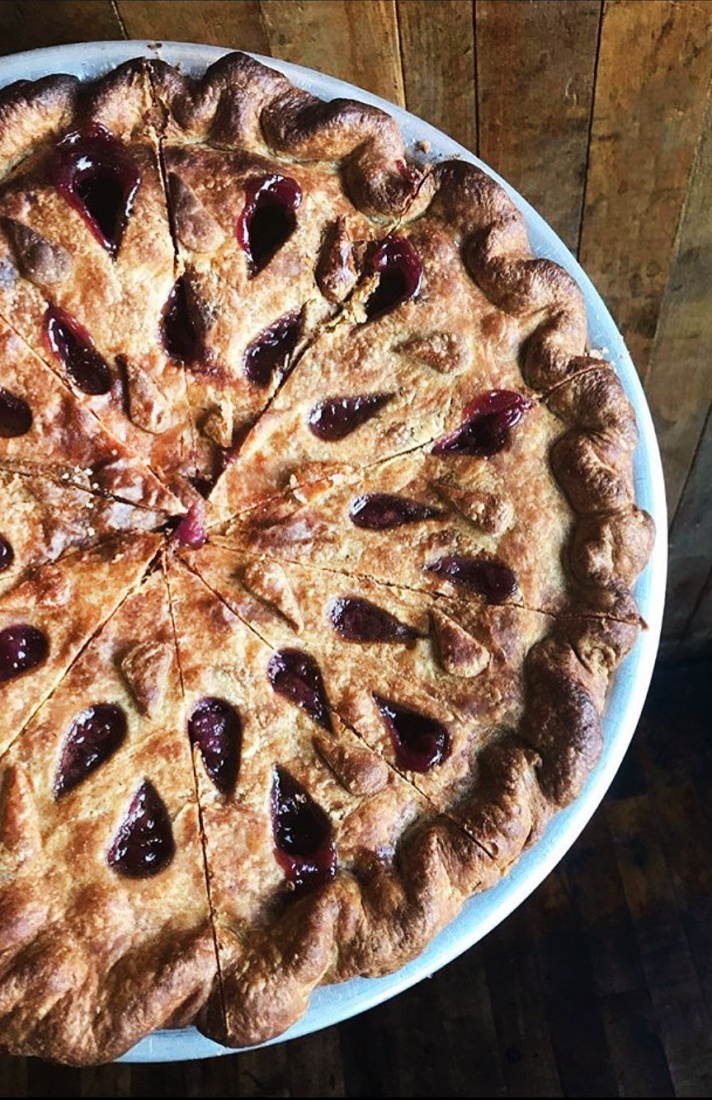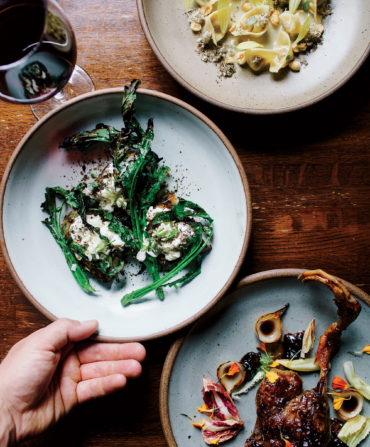Some of pit master Elliott Moss’s fondest memories from his childhood in Florence, South Carolina, involve muscadines. “We had old muscadine vines on our family property when I was growing up,” says the Asheville, North Carolina, chef and pit master. “They were torn down with Hugo in 1989, but some of my earliest memories are of my dad making wine with the muscadines, and my grandma making whole-grape pies.”

Photo: Courtesy of Buxton Hall Barbecue; Tim Robison
From left: Ashley Capps; Elliott Moss.
Not long after Buxton Hall Barbecue opened in 2015, Moss’s pastry chef, Ashley Capps, brought in a crate of muscadines, immediately reminding Moss of the early fall days of his childhood. “We made this pie with that in mind,” he says. Capps peels the grapes, cooks down the pulp, and strains the seeds before folding in the grape hulls. “The skins give it a beautiful color,” Moss says. While he grew up with meringue-topped pie, Capps sprinkles hers with an oat crumble or folds a second layer of dough over the top with decorative cuttings. “It’s pretty nostalgic and emotional for me,” Moss says. “Just smelling this pie brings me back to being a kid.”








